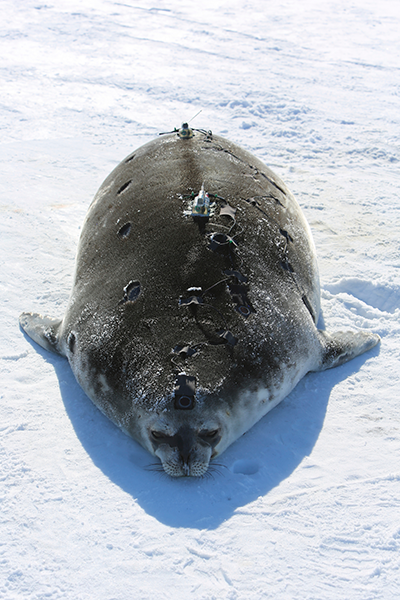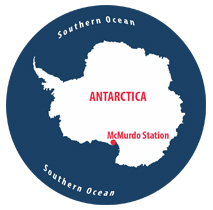|
During their two seasons on the ice, Dr. Mellish and her team successfully collected data from forty Weddell seals. Back in their labs in Alaska, Colorado, and Oregon, the researchers began processing their data. The first step was to make sense of it all!
Knowledge of computer programming helped Dr. Hindle sort through the data. She began by looking at the relationships between variables. She used those relationships to build mathematical models that answered the team's research questions. At the same time, Dr. Mellish was working to analyze the team's collection of thermal images.
Upon close analysis, patterns began to appear. Dr. Mellish determined that while all the seals sampled lost heat from the same areas of their body, the leaner seals (the juveniles and adult females who'd recently weaned pups) tended to lose more heat than the fatter seals. This finding supports the team's hypothesis that leaner seals may be less able to adapt to changing conditons than seals with more stored blubber.
While complete models will take years to build, initial modeling results show that Weddell seals live in a careful balance with their polar environment. The data indicates that if ice conditions continue to change, this balance could be thrown off.
While scientists are still uncertain what the effects of climate change will be on the polar regions, they are increasingly certain that there will be effects. Research projects like this one are important because they increase scientists' ability to predict how animals and ecosystems may respond to such changes.

|
|
WHO IS STUDYING SEALS?


|
|
DATA (n) - values of something measured |
|
|
PROCESS (v) - to sort and analyze recorded data |
|
|
VARIABLE (n) - an element of a system that can change |
|
|
MODEL (n) - in science, a representation of data that makes something easier to quantify, predict or understand |
|
|
ANALYZE (v) - to carefully examine something |
|